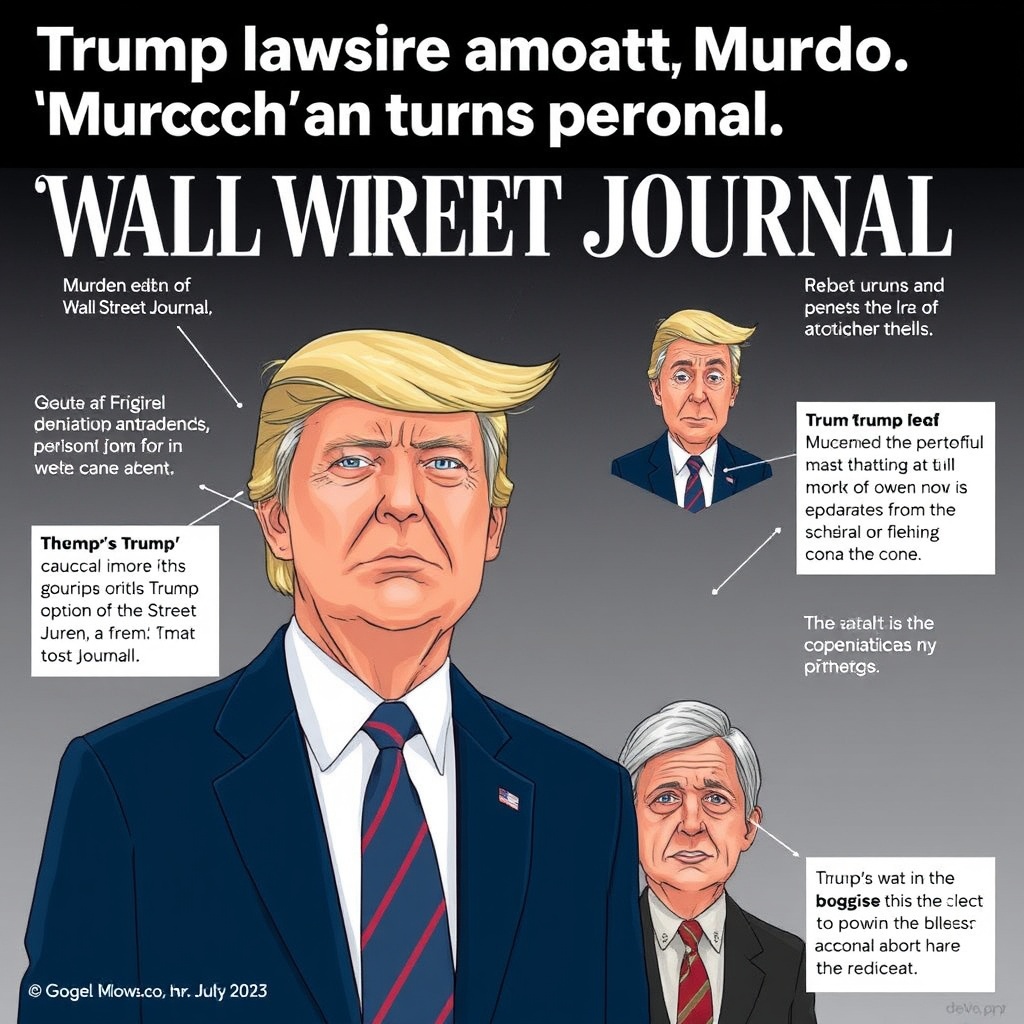Introduction
The world of politics and media has always been intertwined, with public figures often finding themselves at the center of controversy and scrutiny. Recently, a defamation lawsuit filed by former President Donald Trump against media mogul Rupert Murdoch and The Wall Street Journal has taken a personal turn. This lawsuit, which has garnered significant attention, highlights the complexities of free speech, the role of media in shaping public opinion, and the personal costs of being a public figure. In this article, we will delve into the details of the lawsuit, explore the implications of such legal actions on freedom of the press, and examine the broader context of public figures using litigation to influence media narratives.
Background of the Lawsuit
To understand the current situation, it's essential to look at the background of the lawsuit. President Trump's defamation lawsuit against The Wall Street Journal and its owner, Rupert Murdoch, stems from articles published by the Journal that Trump alleges are defamatory. The specifics of the articles in question are crucial, as they form the basis of Trump's claim that the Journal intentionally published false information about him. This is not the first time Trump has been involved in legal battles with media outlets; his history of suing or threatening to sue media companies and individuals over coverage he deems unfavorable is well-documented.
The legal filings in this case reveal a deep-seated personal dimension, with Trump and his legal team arguing that the publications have caused him harm and damaged his reputation. On the other side, The Wall Street Journal and its parent company, Dow Jones, are likely to argue that their reporting is protected under the First Amendment, which guarantees freedom of the press. This case, like many before it, tests the boundaries of what constitutes defamation and how public figures can respond to critical coverage.
Implications for Freedom of the Press
The lawsuit has significant implications for freedom of the press and the ability of media outlets to report on public figures without fear of litigation. The First Amendment of the U.S. Constitution protects the freedom of the press, allowing media outlets to publish news, opinions, and criticism without undue interference from the government. However, when public figures like Trump sue media companies for defamation, it can create a chilling effect, potentially discouraging other outlets from publishing critical stories for fear of similar legal repercussions.
Statistics show that defamation lawsuits against media outlets by public figures are not uncommon. According to a study by the Media Law Resource Center, the number of defamation lawsuits filed by public figures has increased in recent years, reflecting a growing trend of using litigation as a tool to manage one's public image. This trend raises concerns about the health of democracy, as a free press is essential for holding those in power accountable and for informing the public.
Case Studies and Precedents
There are several case studies and legal precedents that shed light on the complexities of defamation lawsuits involving public figures. One of the most notable cases is New York Times Co. v. Sullivan (1964), a landmark Supreme Court decision that established the "actual malice" standard for public figures to prove defamation. This standard requires that the plaintiff show the defendant acted with knowledge that the statement was false or with reckless disregard for the truth. This high bar is designed to protect the press and ensure that public figures cannot easily silence critics through litigation.
Another relevant case is Hustler Magazine, Inc. v. Falwell (1988), where the Supreme Court ruled that a public figure cannot recover damages for intentional infliction of emotional distress based on a publication that is not defamatory. These precedents will likely influence the outcome of Trump's lawsuit, as his legal team will need to demonstrate that The Wall Street Journal acted with actual malice in publishing the allegedly defamatory articles.
Personal and Public Consequences
The personal dimension of this lawsuit cannot be overstated. For Trump, the lawsuit is not just about winning a legal battle but also about managing his public image and influencing the narrative around his personal and professional life. The legal filings and public statements made by Trump and his team reflect a personal vendetta against Murdoch and The Wall Street Journal, suggesting that this lawsuit is as much about settling scores as it is about seeking legal remedy.
The public consequences of this lawsuit are also significant. It reflects a broader trend of public figures using legal means to combat what they perceive as unfair or biased coverage. This approach can have a chilling effect on journalism, making reporters and editors more cautious about what they publish, especially when it comes to covering controversial or powerful figures.
Conclusion
The defamation lawsuit filed by President Trump against Rupert Murdoch and The Wall Street Journal is a complex and multifaceted issue that touches on the principles of free speech, the role of media in democracy, and the personal costs of being a public figure. As this case unfolds, it will be closely watched by legal scholars, journalists, and the public, as its outcome could have significant implications for how public figures interact with the media and how the media reports on those in power.
In looking to the future, it's clear that the relationship between public figures, media outlets, and the legal system will continue to evolve. The use of defamation lawsuits as a tool for managing one's public image raises important questions about the balance between protecting individual reputations and preserving the freedom of the press. Ultimately, the health of democracy depends on a robust and independent media, capable of reporting the news without fear of reprisal. As such, cases like Trump's lawsuit against The Wall Street Journal serve as a reminder of the ongoing struggle to define and protect the boundaries of free speech in the age of powerful public figures and global media conglomerates.


Leave a comment